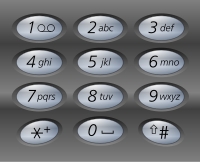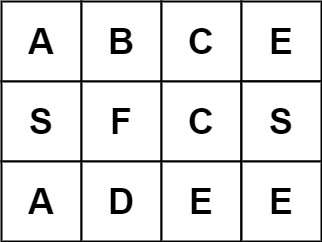2022-06-07
Description
Given a string containing digits from 2-9 inclusive, return all possible letter combinations that the number could represent. Return the answer in any order.
A mapping of digit to letters (just like on the telephone buttons) is given below. Note that 1 does not map to any letters.

Example 1:
Input: digits = "23"
Output: ["ad","ae","af","bd","be","bf","cd","ce","cf"]Example 2:
Input: digits = ""
Output: []Example 3:
Input: digits = "2"
Output: ["a","b","c"]Constraints:
0 <= digits.length <= 4digits[i]is a digit in the range['2', '9'].
Solution
Approach #0
Description
Given n pairs of parentheses, write a function to generate all combinations of well-formed parentheses.
Example 1:
Example 2:
Constraints:
1 <= n <= 8
Solution
Approach #0
Description
Given an m x n grid of characters board and a string word, return true if word exists in the grid.
The word can be constructed from letters of sequentially adjacent cells, where adjacent cells are horizontally or vertically neighboring. The same letter cell may not be used more than once.
Example 1:

Example 2:

Example 3:

Constraints:
m == board.lengthn = board[i].length1 <= m, n <= 61 <= word.length <= 15boardandwordconsists of only lowercase and uppercase English letters.
Follow up: Could you use search pruning to make your solution faster with a larger board?
Solution
Approach #0
Last updated